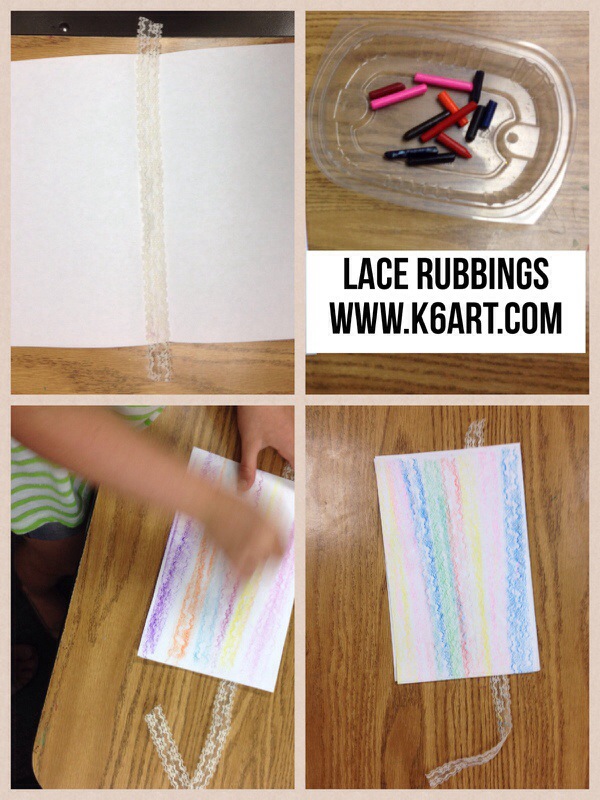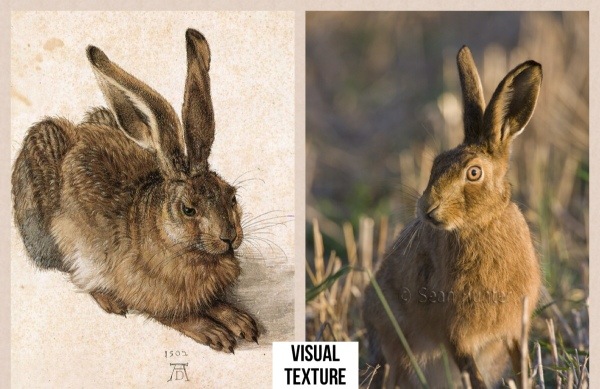
Here’s an easy end-of-year art project that has no clean up yet teaches about texture.
Materials:
Copy paper
Pieces of lace, approx. 14″ long
Peeled crayons – variety of colors
First we talk about physical texture. Students run their fingers along the lace. They described the lace as ‘bumpy’ or ‘rough’. Next we folded the copy paper horizontally (‘hamburger’) and sandwiched the lace inside, parallel to the crease. Students closed their papers and rubbed the covered lace with a peeled crayon.
The kindergarteners and first graders were AMAZED when the lace texture appeared on the paper. We opened the papers, scooted the lace over an inch or so, and repeated the process with a variety of peeled crayons. Within a few minutes, students had a lovely striped lace paper.
Physical vs Visual Texture
We had a quick discussion about physical and visual texture. Students ran their hands over their crayon art. How did the paper feel? Did it feel the same as the lace? The bumpy lace has texture you can feel. This is physical (tactile) texture. The rubbing has texture we can see but not feel. .This illusion of texture is called visual texture.

I showed students a laminated poster of Durer’s hare. I instructed them to close their eyes and imagine petting the rabbit’s soft fur. They agreed the artists had done a great job painting the hare so that the fur looked real (visual texture). I let them touch the laminated card – it just felt like smooth plastic. The art just had visual, but not physical texture.
We went on to create crayon rubbings of other textured items such as cardboard coffee sleeves and pennies. They loved rubbings – one student said it was the best thing we did all year.
Enjoy!
What’s your best end-of-year art project?

